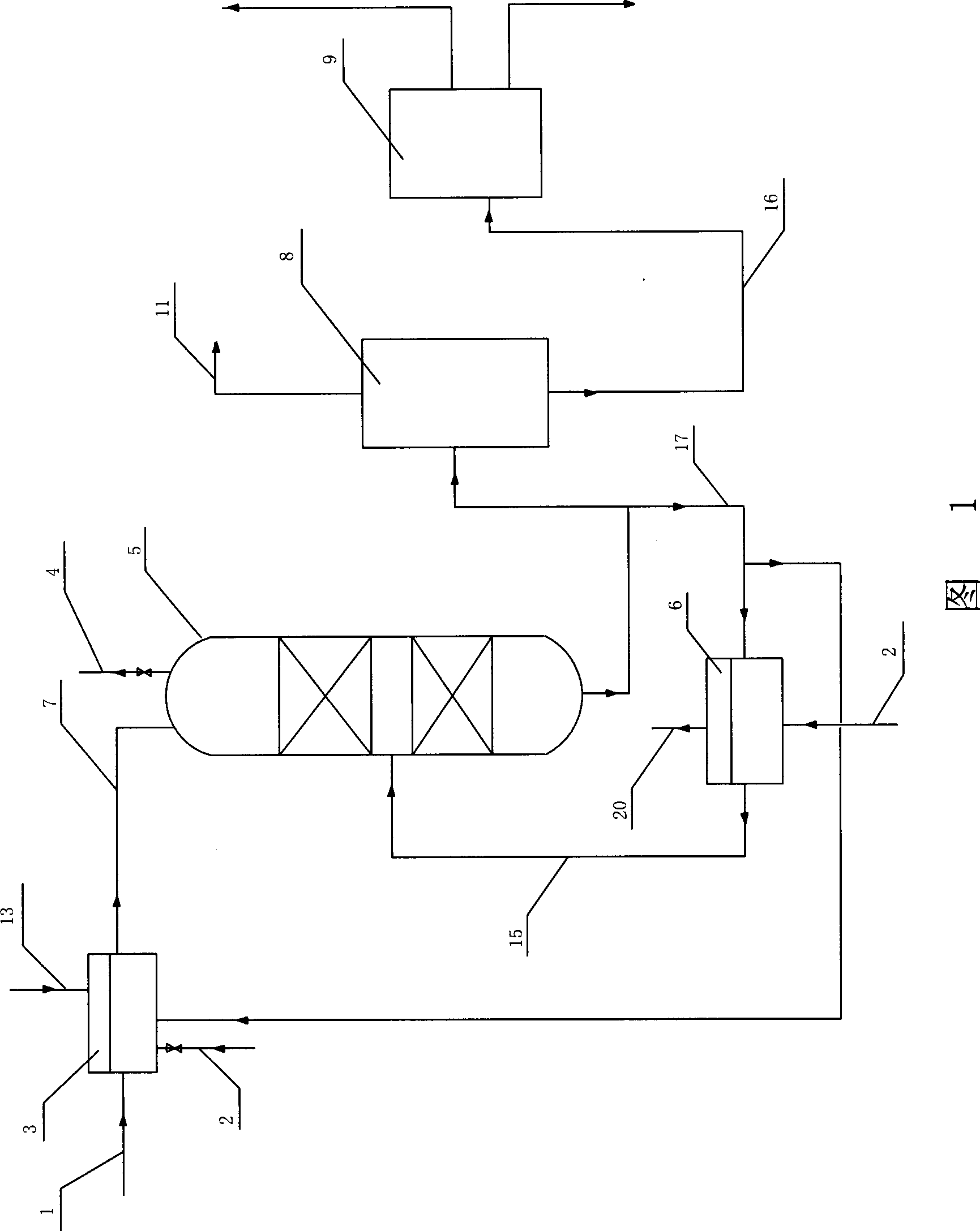Liquid-solid two-phase hydrogenation method
An addition and hydrogen technology, applied in the field of hydrogenation of hydrocarbon oil, can solve the problems of reducing the mass transfer and reaction speed of fresh raw material oil and hydrogen, and achieve the effects of low operating cost, small hydrogen loss, and great operational flexibility
- Summary
- Abstract
- Description
- Claims
- Application Information
AI Technical Summary
Problems solved by technology
Method used
Image
Examples
Embodiment Construction
[0045] As shown in Figure 1, the reactor shown in the figure is a two-stage catalyst bed. In the presence of solvent or diluent 13, fresh raw oil 1 is mixed with hydrogen 2 and part of circulating oil 17 in the first mixer 3 to form a mixture flow, and the mixture flow enters the reactor from the upper part of the reactor 5 as reactor feed 7, and another Part or all of the circulating oil 17 is mixed with hydrogen 2 in the second mixer 6 and exhausted from the second mixer 20 to become the hydrogen-dissolved circulating oil 15. The catalyst bed enters the reactor 5. In the reactor 5, the liquid reacts with the catalyst, the reactor gas 4 is discharged from the upper part of the reactor 5, and the reaction effluent is divided into two parts after coming out of the lower part of the reactor 5, and one part is used as a circulation The other part of the oil 17 enters the first separator 8 for separation, and the waste gas 11 of the first separator is separated, and the separated ...
PUM
 Login to View More
Login to View More Abstract
Description
Claims
Application Information
 Login to View More
Login to View More - R&D
- Intellectual Property
- Life Sciences
- Materials
- Tech Scout
- Unparalleled Data Quality
- Higher Quality Content
- 60% Fewer Hallucinations
Browse by: Latest US Patents, China's latest patents, Technical Efficacy Thesaurus, Application Domain, Technology Topic, Popular Technical Reports.
© 2025 PatSnap. All rights reserved.Legal|Privacy policy|Modern Slavery Act Transparency Statement|Sitemap|About US| Contact US: help@patsnap.com

